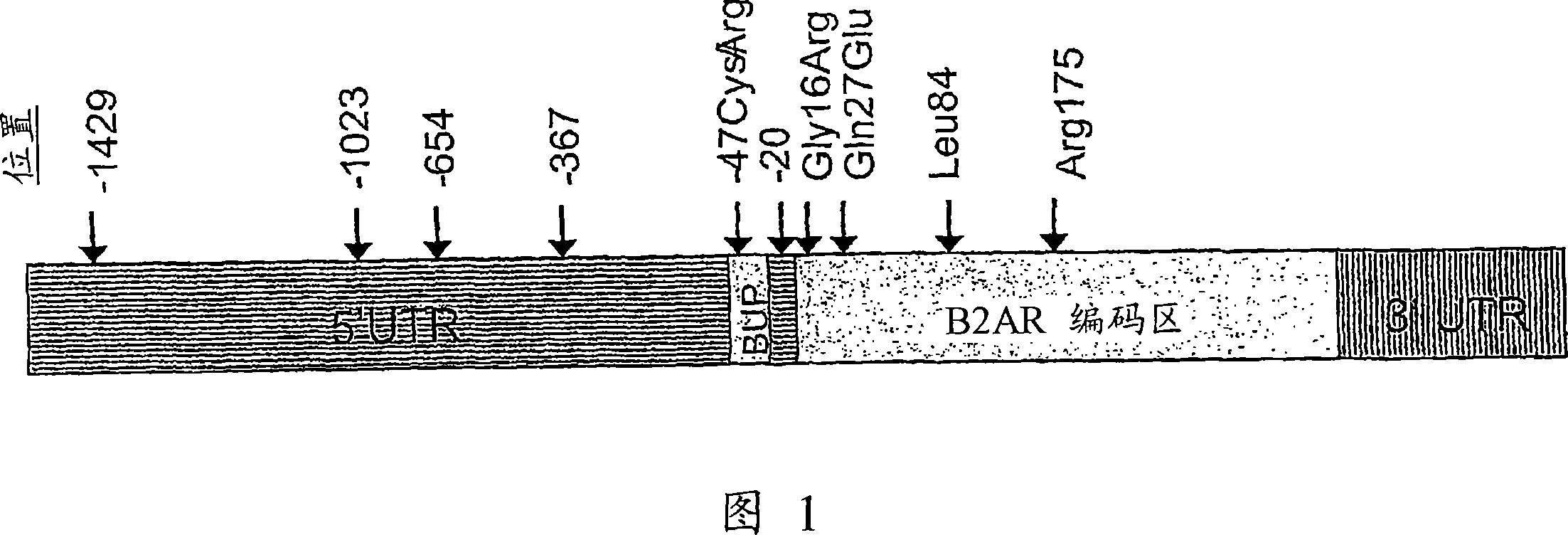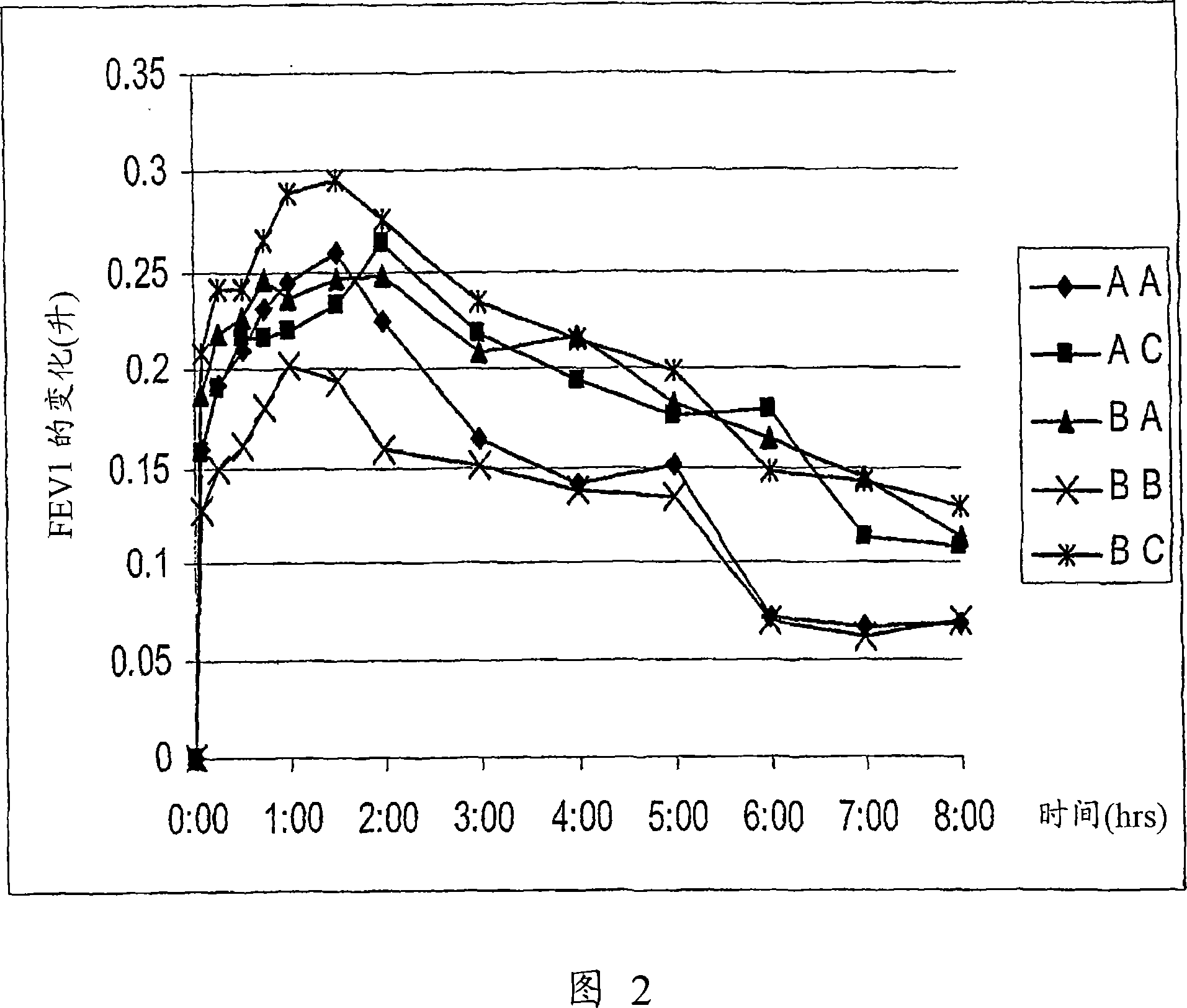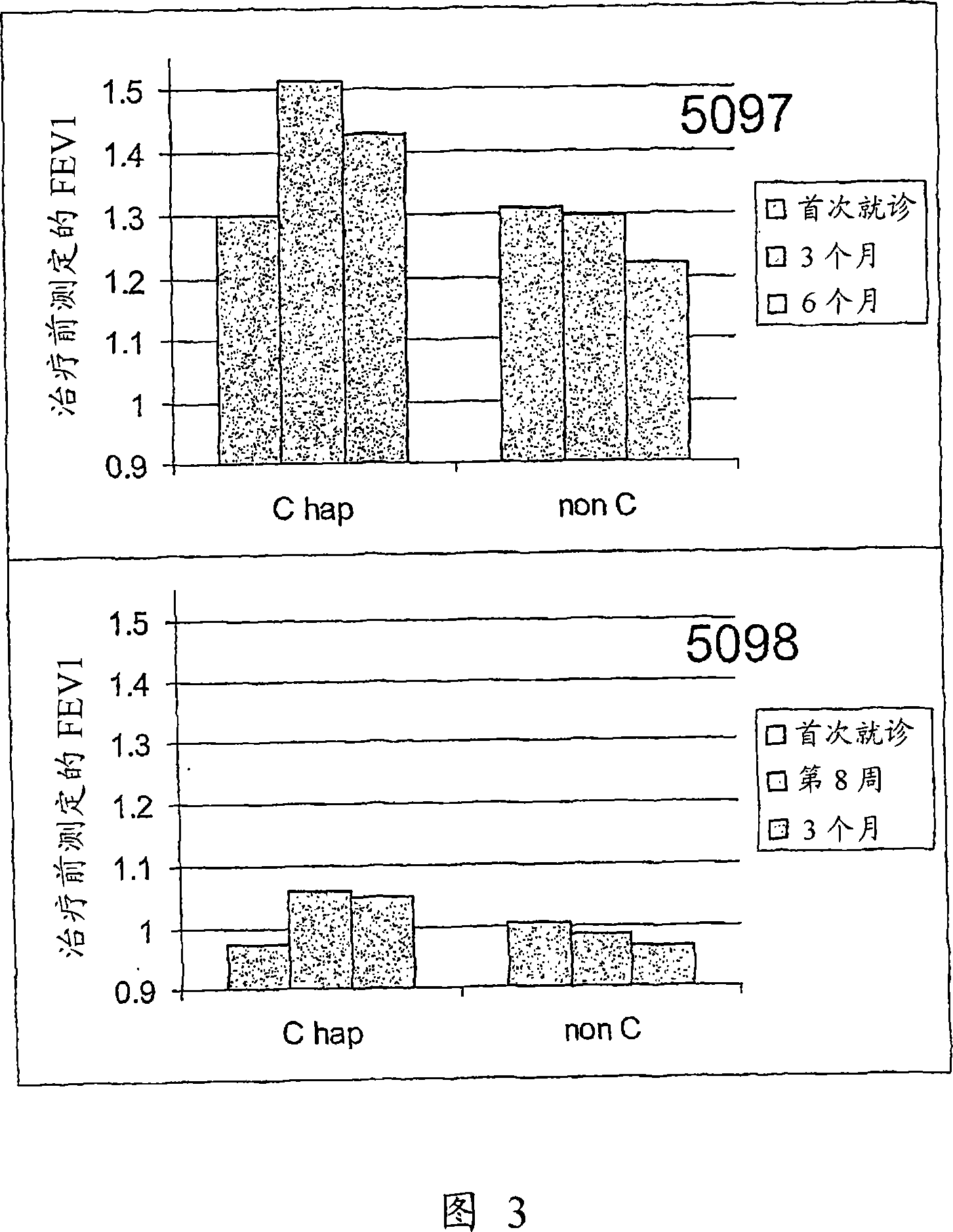Methods for identifying a patient as a candidate for treatment with a long acting beta agonist and for predicting a patient's response to long acting beta 2 agonist therapy by analysing polymorphisms
An agonist, candidate technology, applied in receptors/cell surface antigens/cell surface determinants, biochemical devices and methods, specific peptides, etc., which can solve problems such as adverse side effects
- Summary
- Abstract
- Description
- Claims
- Application Information
AI Technical Summary
Problems solved by technology
Method used
Image
Examples
Embodiment 1
[0184] Samples for genotyping were taken from four Viozan TM2450 patients were enrolled in phase III clinical trials SC-397-5097, SC-397-5098, SC-397-5099 and SC-397-5163. The patient population included male and female patients, aged 40 to 80 years, with stable COPD, symptoms for ≥2 years, and a history of smoking for at least 15 pack years. The study included those exhibiting pre- and post-bronchidilation FEV1 / FVC (forced vital capacity) less than 65% (of predicted normal), and 20-70% of predicted normal. Patients with FEV1. More details on patient populations and study design are described in Laursen et al. Respiratory Medicine (2003), Vol 97, Suppl A, S23-S33. Participation in the genetics substudy is voluntary. Patients gave independent written informed consent for genetic analysis. Patients agree to provide DNA for use in research on Viozan TM Reaction. Viozan TM It is a dual agonist, targeting the β2-adrenoceptor and dopamine D2 receptor genes, and was developed ...
Embodiment 2
[0197] Example 2 - Haplotype - Lung Function Analysis
[0198] Pre-dose and post-dose FEV1 (forced expiratory volume in 1 second), the volume of air exhaled in the first second during the FVC maneuver (manoeuvre) (in liters indicated), for all patients their measurements were obtained at each study visit, as described in the clinical study protocol. Spirometry was performed at each center using standard techniques. Details on the spirometer used and calibration records were provided by each centre. After a 15-minute rest period, slow vital capacity (SVC; slow vital capacity), forced vital capacity (FVC) and FEV1 were determined for at least three separate manipulations (manoeuvre). Record the maximum value for each parameter.
[0199] In a subgroup of patients (all of whom showed ≥5% FEV1 reversibility in response to the inhaled SABA salbutamol (salbutamol) 400 μg), serial FEV1 measurements (at 5, 15, 30, 45, At 60, 90, and 120 minutes, and hourly thereafter until 8 hours ...
Embodiment 3-
[0205] Example 3 - Haplotype-Symptom Score Association
[0206] Changes in COPD symptoms were assessed using the BCSS (Breathness, Cough, and Phlegm Score), also known as the TSS (Total Symptom Score). Each symptom, shortness of breath, cough, and phlegm, was assessed daily by the patient and recorded in a diary using a 5-point Likert scale (ranging from 0 to 4, with higher scores indicating more severe symptoms). The three item scores are combined to calculate the BCSS total score, resulting in a value between 0 and 12. The reliability and validity of the BCSS for assessing symptoms in COPD is discussed in Leidy et al., 2003, Respiratory Medicine, Vol 97, SupplA, S59-S70. A mean change of ±1 point in the BCSS total score represents a substantial improvement in symptom severity in patients with moderate to severe COPD (Celli et al. Respiratory Medicine, (2003) Vol 97, SupplA, S35-43).
[0207] Figure 5 shows the change from baseline BCSS for patient subgroups stratified by A...
PUM
 Login to View More
Login to View More Abstract
Description
Claims
Application Information
 Login to View More
Login to View More - R&D
- Intellectual Property
- Life Sciences
- Materials
- Tech Scout
- Unparalleled Data Quality
- Higher Quality Content
- 60% Fewer Hallucinations
Browse by: Latest US Patents, China's latest patents, Technical Efficacy Thesaurus, Application Domain, Technology Topic, Popular Technical Reports.
© 2025 PatSnap. All rights reserved.Legal|Privacy policy|Modern Slavery Act Transparency Statement|Sitemap|About US| Contact US: help@patsnap.com



